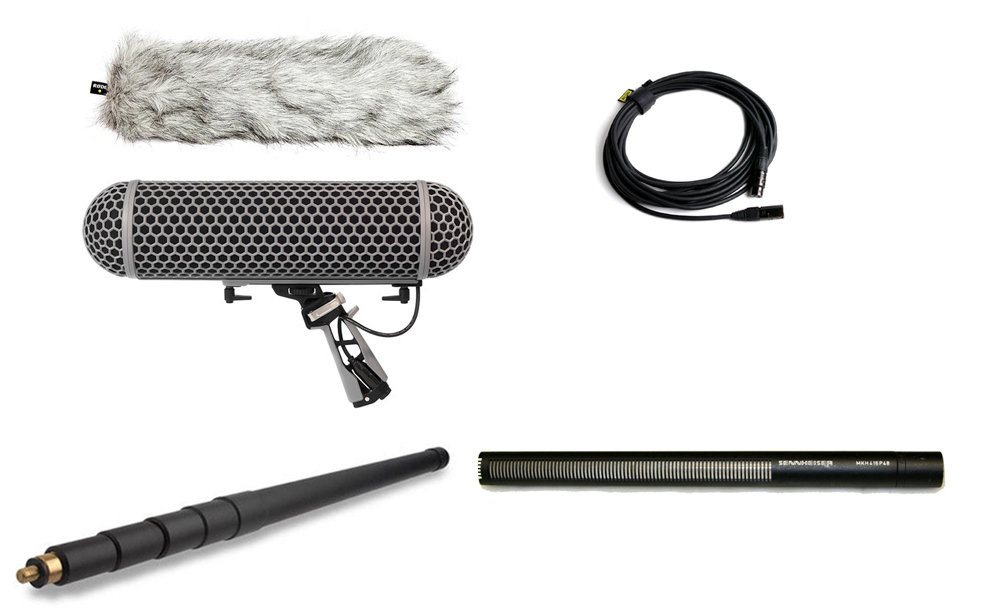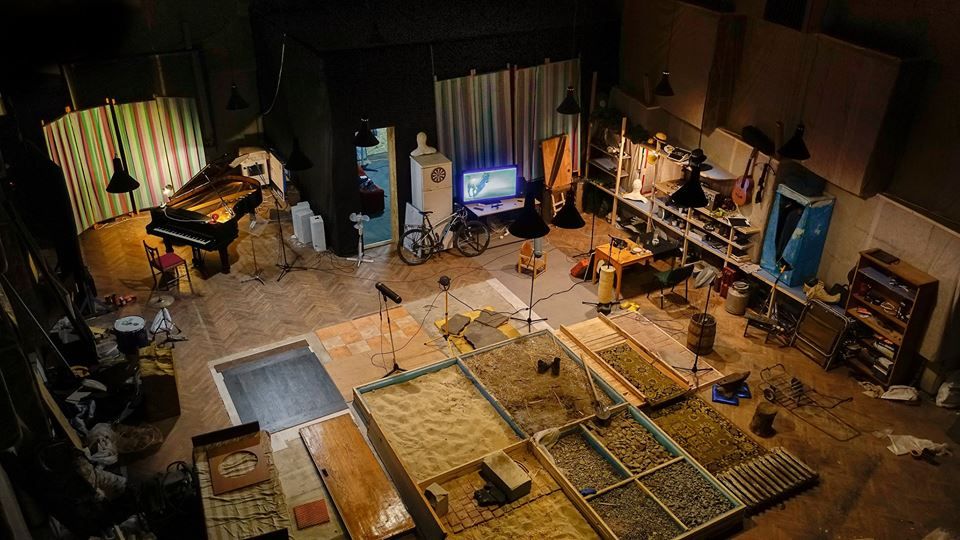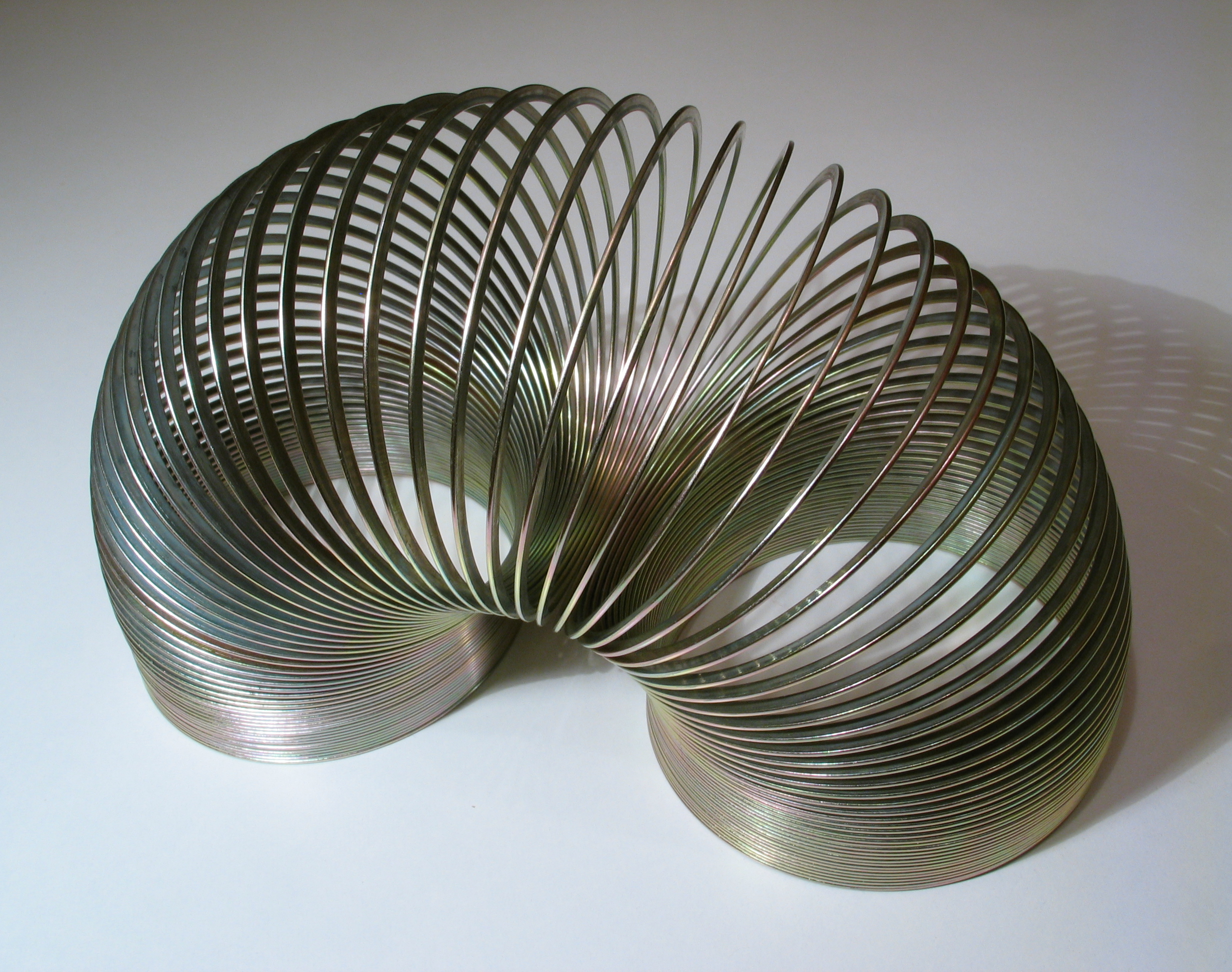The history of Foley recordings is normally and quite wrongfully traced to Universal Film Studios and a man who worked there, namely Jack Foley. The legend says that he was asked by the producers to make sonic effects for their upcoming silent musical, Show Boat in 1929 and that he created techniques that are in use in modern-day Foley as well. Mostly the sonic landscape consisted of effects, footsteps, and clothes rustling. They did not have an official studio for Foley at that time in Universal, but a structure was built around the talent in order to get better isolation for the material. The first studio dedicated to these added sounds was built by Desilu Studios, which also started to use the name Foley for this artistry.
This story of the evolution of this trade is at least half a myth because the vaudeville tradition had already this technique inbuilt in an elementary way. It was a genre of variety entertainment that itself was influenced by the English Music Hall tradition. An early radio soundman and drummer called Robert L. Mott, who was a generation behind Jack Foley, said that this chain of influence exists. In radio plays, they used to utilize the vaudeville style of the drummer highlighting the gags and dramatic impact with the drum set. These cues were taken from the actors and there was a communicative relationship between them. The use of records, gadgets, and props became a later practice when the craft evolved. With this background in mind, Jack Foley can be seen as a developer of the process, which later came to bear his name even though Mott and Foley were soundmen by profession. This is also a misleading title, because most of the dancers that produced the footsteps and some of the props for the movies, were women.

Jack Foley
At the time of the early 1930s and onwards, Mr. Foley used 10-minute reels to capture the sound for the movies. If anything went wrong in a striking manner, he would record the whole 10 minutes take anew. This is inconceivable to the modern-day Foley artist, who can record the reel for one scene in several segments. When another studio called Desilu Studio started to use these recordings that Jack had made, they called their brand-new stage for creating these, a Foley stage, and this name has ever since been used for the artistry. Jack himself called the sonic events merely sound effects. Foley artists were not credited in the end titles until the late 1980s, but still, Jack and Robert are essential developers of the craft, which ever since has grown to a very respected form of expertise. Special thanks goes also to Metro Goldwyn Mayer Studios, which understood the value of it early on. Countries like France, Italy, Serbia, and Russia all have their respective traditions in this trade.
I'll take the shotgun
A well-done Foley track elevates the production soundtrack by creating a sonic landscape that has a more realistic touch to it. These are normally added in the post-production stage and they normally include footsteps of the main characters and background characters, clothing movements, prop handlings, like books, doorknobs, and tableware, hands touching different surfaces, grabs of different objects, and human contacts like kissing, hugging and hitting. Each and every one of these sounds has to be recorded separately because they are inaudible in the set audio, which mainly concentrates on catching the dialogue with the use of a boom microphone. This is normally a shotgun microphone that has a directive character to it.

Sennheiser MKH-416 shotgun microphone and accessories
The shotgun microphone is officially named an interference tube microphone. Inside the microphone, there is a directional capsule that captures the sound. It has usually a super-cardioid polar pattern in it and has a long, hollow tube, which is called an interference tube. Hence the capsule is not located close to the source, but this creates a better directionality especially at high frequencies and thus the ambient noise is reduced in the recording. The tube picks up effectively the so-called on-axis sounds, that are mainly desired to be heard on the recording, and the slots on the side of the microphone capture the off-axis sounds.
Because of the phase difference that these events have as they arrive at varying times when reaching the capsule, they are partially canceled out by each other and thus the on-axis sounds are more pronounced in the end result. The tube is hence called the interference tube. For this reason, the polar pattern is narrower in the front of the tube and capsule. The factory standard for the shotgun microphone is Sennheiser MKH-416, but Rode NTG-3 makes a good runner-up. For budget productions, any shotgun mic will do. One just has to consider the properties of the given mic in order to get the best results.
Footsteps, props, and cloth
When a Foley artist starts to work upon the soundtrack, there is first a meeting with the director and the picture editor, where different sonic events are observed, registered, and talked over. The Foley artist has to take into account all of the heard events that are created by people, animals, or machines as a result of their concrete movements or actions. The audible result should match the visible content. This is achieved by analyzing the different materials, surfaces, and certain parts of the body that are seen in the picture. There are mainly three categories, namely footsteps, props, and "cloth" which are written down or cued in the Foley script for exact delivery.
The footstep category is quite simply the sounds that people make while walking, running, or jumping on a certain surface. The material of the shoes should be considered to get the most precise feel and it differs from the era of the film or game. If the creatures are from another planet, then some material has to be even invented in order to capture the right feel. Foley artists also have a way to simulate different surfaces on which they walk, for example, wood, cement, grass, or gravel. These different surfaces are called Foley pits, which can consist of open squares below the level of the floor or flat areas that are in line with the visible content. The uttermost challenge in recording the steps is getting exactly the right amount and the rhythm of the steps to the recording because greater accuracy also creates a deeper immersion.

Professional Foley Studio
The props are then all the additional sounds that are made by the body of the character that moves on the screen. The hand props include everything that is being for example scratched, grabbed, squished, or otherwise handled by fingers or other body parts. Also, sounds generated with the mouth belong to this category. Common utensils include tableware, pencils, and pens, knives, and guns as well as bottles and keys. Also, bodily contacts with other people, animals, or surfaces have to be considered. Whatever the filmmaker portrays in the picture should be matched with the compatible effects in order to create the perfect flow of the scenes. Normally, when effects like explosions are created, the sound department tends to combine field recordings and Foley stage work for the best results. Foley excludes the sounds of car engines, explosions, and laser blasts. Those are the responsibility of the sound effects department.
"Cloth" refers to the sounds that are produced when the actors on screen interact with different materials and props like plastics, leather, and jewelry. The Foley artist has to reenact the body movements that are seen on the screen while wearing those materials and then record those to a separate layer. The movement layers differ a lot according to the profession or hobby, whether the person is an athlete, backpacker, or a worker. Gear like ammunition, holsters, radios, keys, and equipment that most law enforcement or military personnel use, also has to be carefully recorded. If for example, the cloth track, which includes how the fabrics are heard in contact with the skin or even hands or other body parts involving contact, is missing, it can easily disturb the flow of storytelling. The sonic landscape of the scenes isn't natural especially when the scene is otherwise quiet.
The Foley team
The Foley team is normally a group of people, who each have their own responsibilities. The mixing engineer selects the microphones and places them in the space regarding the nature of the sonic event. With different kinds of placements, the microphones capture a sound that is either punchy or natural. These are many times close-up microphones and room microphones and they normally are mixed in different proportions together into the final mix. The supervising Foley editor and Foley editor have to then fit these mixed and equalized recordings to the moving image. The aural environment has to synchronize perfectly with the picture in order to maintain the grip and illusion. Positioning of the sound is done with panning, which determines the location of the source. This is very important to do carefully so that the viewer does not feel that the source is detached from its emitter.
Mixing and recording Foley
For game audio, the decibel level of the Foley is normally a bit lower than for movies, where the default is 85 dB SPL. This means that the effects have to be big, loud, attention-getting, and powerful to be heard through in the mix. From the recording point of view, this also requires layering to be done, because the wider array of sonic events is also more audible. It also needs that the Foley has to be compressed and equalized as well as limited properly so that they stand out as they are intended to. Also, reverberation is important, since it takes the space and the distance into consideration.
Traditionally the Foley is recorded into movies with the use of only one microphone. This is not necessarily a good approach for game audio, because there are so many perspectives and locations of the emitters since the player can move quite freely around in the environment. The Foley can imitate this vastness by using 3-4 microphones, that are on different heights and different distances from the source. This makes it easier for the Foley artists to get many dimensions of the material for the given scene even at once instead of capturing the sound with exactly the same props from different angles and distances.
DIY Foley
Foley recordings can uplift the sonic landscapes in your games and they can easily be done on a smaller budget as well. All you need is a microphone, a couple of pairs of shoes, props found at home like keychains, tableware, glasses, garments, and different cloth materials, and so on. If you are doing a horror game, a collection of fruits and vegetables to create gory impact hits or joint crackling and bone-breaking sensations. A classic knife stab is created with a kitchen knife and a watermelon. You will need to select a room that has fairly dry acoustics, meaning that the room has to be treated with curtains, carpets, and pieces of cloth if it reverberates too much. This is mainly because the post-production stage adds the effects to the recordings when they have to be matched with the ambiance seen on the screen.
The renowned sound designer Ben Burtt told how he found the famous laser gun effect for the Star Wars movies using a regular Slinky toy, that produces sounds that resemble it when tensed and hit with a wooden stick. The high frequencies reach the microphone quicker and are followed by an array of lower frequencies when they are captured from the far end of the spring. The way of designing effects for games is very close to the philosophy of animation movies since they both normally have some kind of unnatural element to them and the aural landscape needs to match this. A vocoder can be used to create a supernatural voice for a character. These are also inbuilt as plugins in many modern DAWs (Digital Audio Workstations).

Slinky toy
At the most basic level, the Foley production at home craves just a small amount of equipment and more than that the creativity to invent effects from a limited array of sources. Different materials give a different response when you walk on them with shoes that have varying soles or hit them with a wooden mallet or a metal bar. All of the properties of the given aural events have to be considered to match the things that are visible on the screen. You need a microphone and preferably a zero-latency audio interface in order to match the audio with the visible content most accurately in real-time.
Summary
Jack Foley can be seen as the developer of the Foley artistry, which indeed was not his invention, but which was present already in the vaudeville tradition that preceded him. The interaction between the drummer and the actors was used to create a stronger impact on the witticisms and dramatic effects that were performed in the play. Foley simply honed the trade to a form that it follows today as well in the techniques and methods that he created.
The way of preparing well for a Foley session starts with a cue sheet that has all the separate sonic events that you need for a specific scene, written down to it. This is done in the meeting with the director and the picture editor and requires to watch the whole material through while contemplating all of the distinctive things that would make some sound if they were in the real world. The meticulous work stage acts as a sturdy platform, from which the recordings are easier to make in an organized way.

Foley Sounds at Home
Making your own Foley recordings on a shoestring budget has to be made resourceful because the equipment might not match the industry standards on every level. This is where the history and knowledge about Foley and how it has been made earlier comes in handy and it provides a bottomless treasure chest to dig into. Mostly good Foley is made with the things that are in hand, so use what you have and see how far it can take you in terms of ingenuity. Many times the gear restrictions fuel the imagination and there are lots of free tutorial videos on YouTube as well if you want to dig deeper into the subject.
The need for Foley sounds can be found in the post-production stage for any kind of media content varying from movies and games to radio shows and YouTube videos. It can elevate the production and nudge up the quality by adding another nuanced layer to it. This mostly unnoticed soundscape makes the games, videos and movies feel more realistic, when the audible events match better the visual content, that the gamers or spectators follow with their eyes. After all the best Foley is the one that the spectators barely notice because it is so well done. The trick is though not to do more than is necessary to emphasize the action on the screen. Many times Foley recordings make the workflow smoother and faster than browsing through sound libraries and trying to find the perfect sounds that fit the occasion.
References
Ament, Vanessa, Theme. (2014). The Foley Grail: The Art of Performing Sound for Film, Games, and Animation. Retrieved from
https://learning.oreilly.com/library/view/the-foley-grail/9780415840859/000_9780203766880_cover.html
Davis, Dane. "Foley in Films, Television, and Games." magicshirt.com,
http://magicshirt.com/Foley-Dane.pdf
Isaza, Miguel. "Andrew Lackey Special: Foley Sessions for Games." Designing Sound, 11 Dec. 2009, designingsound.org/2009/12/11/andrew-lackey-special-foley-sessions-for-games/.
Milsom, Erica, director. Wall-E Animation Foley and Sound Design. YouTube,
Walt Disney Pictures, 2008, www.youtube.com/watch?v=0IPxIvbc_cs.
Music Hall. (2021). Retrieved April 27, 2021
https://en.wikipedia.org/wiki/Music_hall
Robjohns, Hugh, and Gavin Burley. "How Do Shotgun Mics Work?" Sound On Sound, Dec. 2013. https://www.soundonsound.com/sound-advice/q-how-do-shotgun-mics-work.
Singer, Philip, Rodrigues. The Art Of Foley. Retrieved from http://www.marblehead.net/foley/whatisitman.html
Vaudeville. (2021). Retrieved April 27, 2021, from
https://en.wikipedia.org/wiki/Vaudeville
Winters, Patrick. (2017). Sound Design for Low & No Budget Films. Retrieved from
https://books.google.fi/books?id=KDslDwAAQBAJ&pg=PA101&dq=foley+sounds&hl=fi&sa=X&ved=2ahUKEwjN74v1ppTwAhVhwIsKHfYyBwMQ6AEwBHoECAYQAg#v=onepage&q&f=false
Pictures
Picture 1. Jack Foley. Retrieved from https://cinemontage.org/called-foley-anyway/
Picture 2. Sennheiser MKH-416 shotgun microphone and accessories. Retrieved from https://www.nagrit.com/en/sennheiser-mkh-416-rode-boompole-rode-blimp-p-5296.html
Picture 3. Professional Foley studio. Retrieved from https://fi.pinterest.com/pin/519954719472977271/
Picture 4. Slinky toy. Retrieved from https://en.wikipedia.org/wiki/Slinky
Picture 5. Foley sounds at Home. https://www.izotope.com/en/learn/how-to-record-foley-at-home.html


